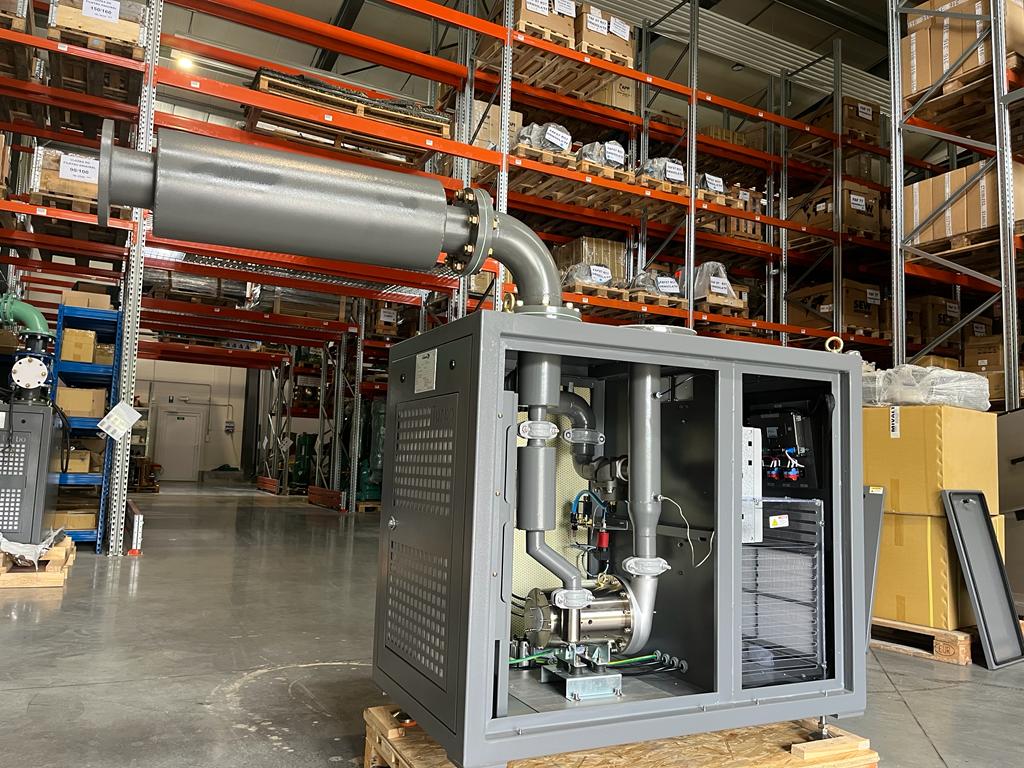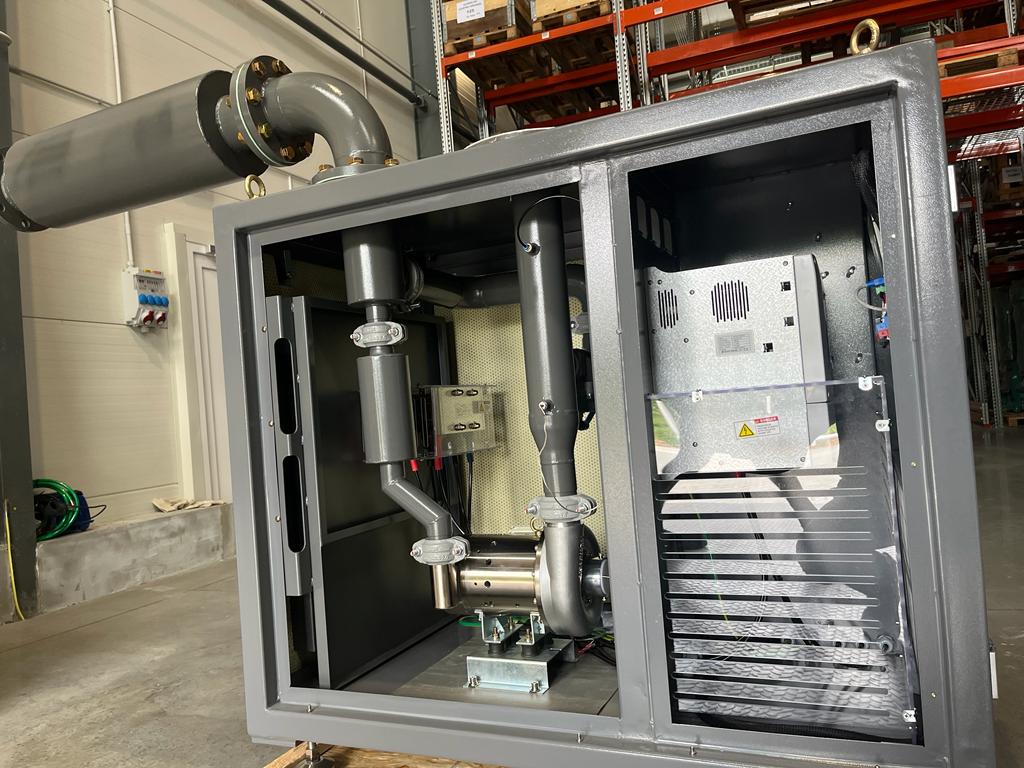Turbo blower saves 40% of electricity
In recent years, we have seen electricity as a valuable commodity. Saving it is one of the key arguments why wastewater treatment plants are considering investing in modernizing their dewatering technology. At a time when electricity bills were climbing to astronomical heights, we launched a completely unique turbo blower that will significantly reduce energy consumption. Of course, turbo blowers have a much broader scope than wastewater treatment plants (WWTPs), but this is where we see the most significant potential.
Roots blower overcome?
For years, we have been living under the assumption that the Roots blower is the best possible solution for compressing and conveying air in terms of efficiency. However, as design skills and, more importantly, machining capabilities have evolved, screw rotor blowers have come on the market that, while more efficient than the Roots blowers mentioned above, are only a few percent more efficient. So, we began to look intensively at how to increase the efficiency of our blowers in a significant way. And so we went down a much more innovative path - we discovered high-speed turbo blowers.

Meet the turbo blower
We met one machinery manufacturer at a trade fair a couple of years ago. At first sight, we were attracted by a unique blower. It outperformed the commonly available solutions on the market by several classes. What everyone is most interested in is efficiency. A high-speed turbo blower of this type is 40% more efficient than a conventional blower. In practice, this means up to 40% less electricity consumption.
You won't find ball bearings in the turbo blower but special air bearings, which is why it can reach an incredible 100,000 rpm. Doing so causes minimal vibration and a noise level of only around 80 dB. The MTB series high-speed turbo blowers have an average of 30-40℃ lower outlet air temperature than a Roots blower, corresponding to a given 40% higher efficiency.

The decision was made
We will offer the MTB high-speed turbo blower to our customers. It fits perfectly into our range for complex dewatering. Despite the higher initial investment, we know it will pay off for our customers in the wastewater segment. The proven higher performance and lower consumption speak for themselves.
High-speed turbo blower and its benefits
Modern MTB turbo blowers are highly efficient and reduce power consumption by up to 40% compared to conventional blowers. And you can already see that in the budget. But those aren't the only benefits you'll appreciate:
-
minimum operating costs,
-
low compressed air output temperature,
-
very low noise and zero vibration,
-
maintenance-free operation (only the suction filter is changed regularly),
-
long service life and high reliability,
-
compact dimensions,
-
many types available according to flow rate or required performance,
-
easy plug & play installation,
-
remote control,
-
delivery within 3 months of ordering.

The figures speak loud
It is clear that most WWTPs already have blowers that fulfill their purpose. So why consider a change and a significant investment? Sometimes, the numbers have to speak for us. In this case, the savings are easily quantifiable.
Here is a case study:
A conventional blower has a consumption of 100 kW at the WWTP.
It runs an average of 5,000 hours per year.
It therefore consumes 500,000 kW per year (5,000 × 100).
The price of electricity can be 6 CZK/kW.
The blower's electricity costs us CZK 3,000,000 annually (500,000 × 6).
In contrast, a turbocharger consumes 40% less power, i.e. 60 kW.
It runs on average 5,000 hours per year.
It therefore consumes 300,000 kW per year (5,000 × 60).
The price of electricity can be 6 CZK/kW.
The turbo blower's electricity costs CZK 1,800,000 annually (300,000 × 6).
Therefore, the annual saving in this particular case is CZK 1.2 million. The cost of the turbo blower is CZK 600,000. This means that in 6 months, you have paid off your investment.
Note: It should be noted that investment in a turbo blower is worthwhile in applications where there is continuous operation and where pressures are at least 500 millibars.
It will not only help WWTPs
The ideal application of a turbo blower is in large-capacity wastewater treatment plants for aeration, from 4,000 EO (equivalent population) to one million EO. However, they also find great benefits in these applications:
-
pneumatic transport - transport of bulk materials (cement plants, sand plants),
-
dehumidification, drying, and desulphurization,
-
fermentation,
-
incineration plants.
If you see investing in upgrading your dewatering technology as a step in the right direction, we would be happy to show you our turbo blower in detail.


